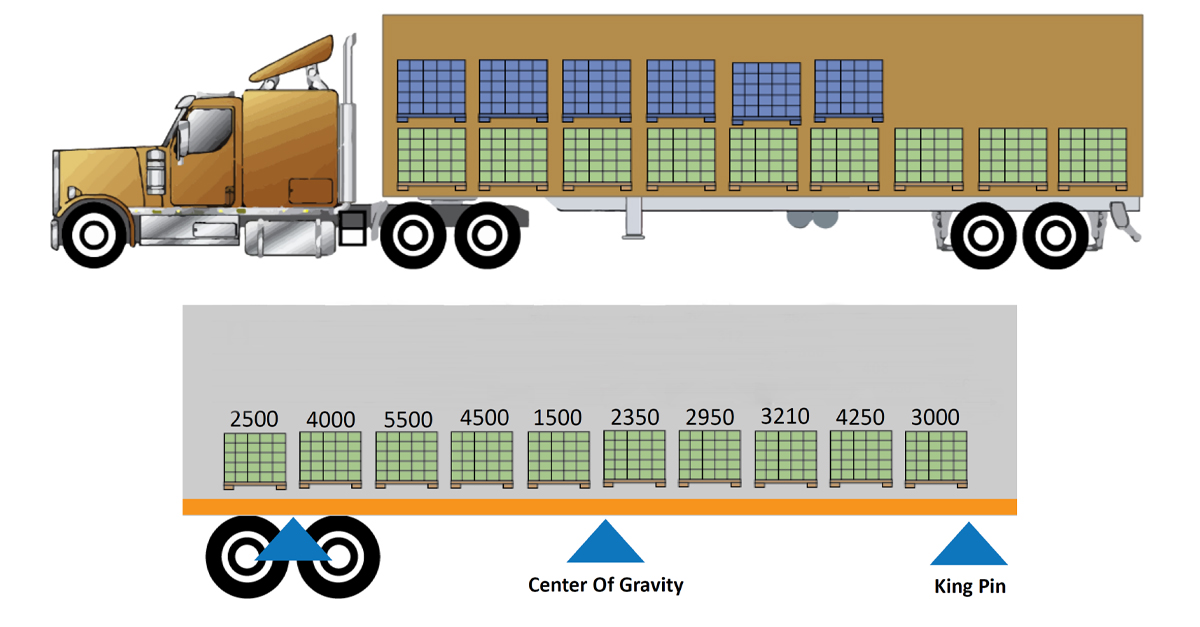
Placing a heavy load to transport sometimes requires a combination of math and creative thinking. It’s simple to calculate when hauling pallets that have similar cargo weights and sizes. This process can present a challenge, however, when the weight and size of the items are inconsistent. A possible result is inequal weight distribution inside of the vehicle. If too much weight is placed at one end or the other of the trailer, vehicle stability and braking performance can be adversely affected.
Today’s Trucking Magazine posted a detailed article on their website that addresses some of these challenges and offers helpful tips in figuring out the best way to load cargo safely. First and foremost, drivers should be familiar with vehicle weight regulations within the states or provinces through which they’re traveling. Knowing the truck’s empty axle weight is also essential.
Start with truck weight
Most highway tractor-trailer cabs weigh between 18,000 and 21,000 lbs., and an empty box trailer weighs around 15,000 lbs. Fuel tanks should be considered full when calculating weight to accommodate for worst case scenario. If the empty (tare) weight of the dry van, five-axle tractor-trailer is 35,000 lbs., it might be distributed as such:
Tractor steer axle: 11,000 lbs. (4,990 kg)
Tractor drive axles: 14,000 lbs. (6,350 kg)
Trailer axles: 10,000 lbs. (4,353 kg)
Tare weight: 35,000 lbs. (15,875 kg)
U.S. axle load limits are 12,000 lbs. (5,500 kg) on the tractor steer axle and 34,000 lbs. (17,000 kg) each on the tractor drive and trailer axles. In the case above, payload can be up to 1,000 lbs. on the steer axle, 20,000 lbs. on the drive axles and 24,000 lbs. on the trailer axles.
Next, endless possibilities
Things to consider at this point include if total cargo weight includes the weight of the pallets, if the shipper has a reliable track record in reporting that weight, and if your truck is capable of handling that much weight. Just as important is how the load is distributed across the length of the trailer. About 800 lbs. per foot length is ideal, but if irregular weights are present, it’s best to place heavier cargo in the middle with lighter cargo in the nose and rear. Securing that cargo is also important in case of shifting and roadside inspections.
If the cargo weight brings the gross vehicle weight to within 10,000 lbs. of its maximum, load distribution becomes especially critical for safe and legal transport.
Many more details can be read at trucknews.com by clicking here. Diagrams above courtesy of their website.
June 2, 2021